Nasim Ferdosian
A Survey of Heterogeneous Graph Neural Networks for Cybersecurity Anomaly Detection
Oct 30, 2025Abstract:Anomaly detection is a critical task in cybersecurity, where identifying insider threats, access violations, and coordinated attacks is essential for ensuring system resilience. Graph-based approaches have become increasingly important for modeling entity interactions, yet most rely on homogeneous and static structures, which limits their ability to capture the heterogeneity and temporal evolution of real-world environments. Heterogeneous Graph Neural Networks (HGNNs) have emerged as a promising paradigm for anomaly detection by incorporating type-aware transformations and relation-sensitive aggregation, enabling more expressive modeling of complex cyber data. However, current research on HGNN-based anomaly detection remains fragmented, with diverse modeling strategies, limited comparative evaluation, and an absence of standardized benchmarks. To address this gap, we provide a comprehensive survey of HGNN-based anomaly detection methods in cybersecurity. We introduce a taxonomy that classifies approaches by anomaly type and graph dynamics, analyze representative models, and map them to key cybersecurity applications. We also review commonly used benchmark datasets and evaluation metrics, highlighting their strengths and limitations. Finally, we identify key open challenges related to modeling, data, and deployment, and outline promising directions for future research. This survey aims to establish a structured foundation for advancing HGNN-based anomaly detection toward scalable, interpretable, and practically deployable solutions.
Scheduling Optimization of Heterogeneous Services by Resolving Conflicts
Mar 02, 2021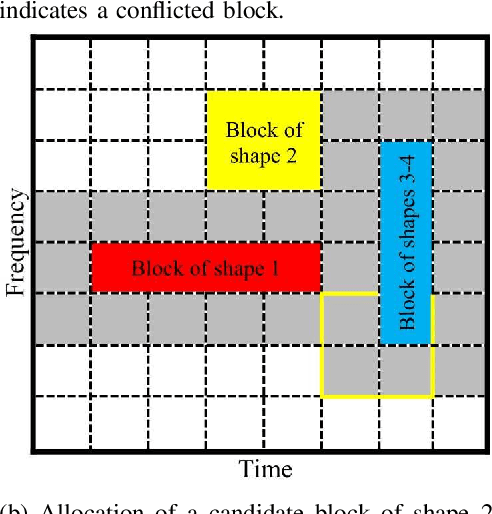
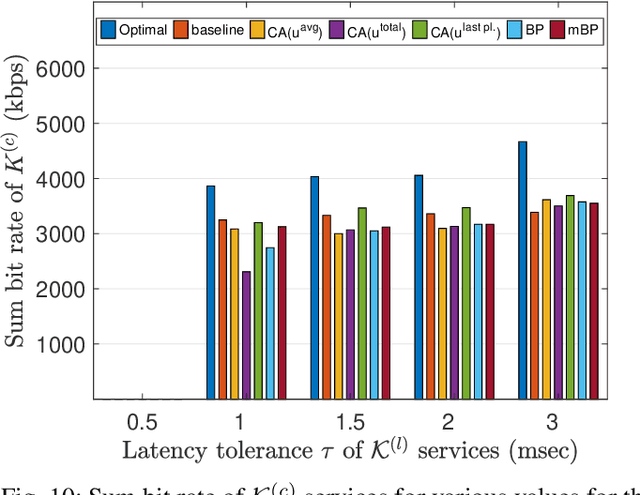
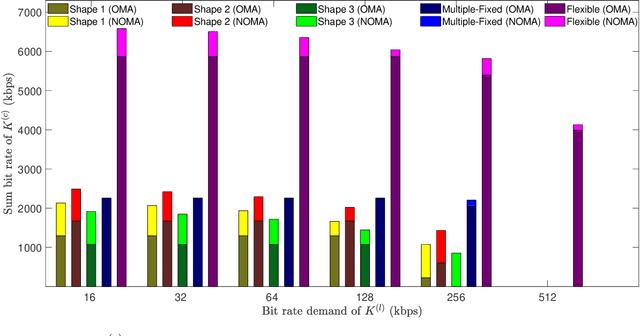
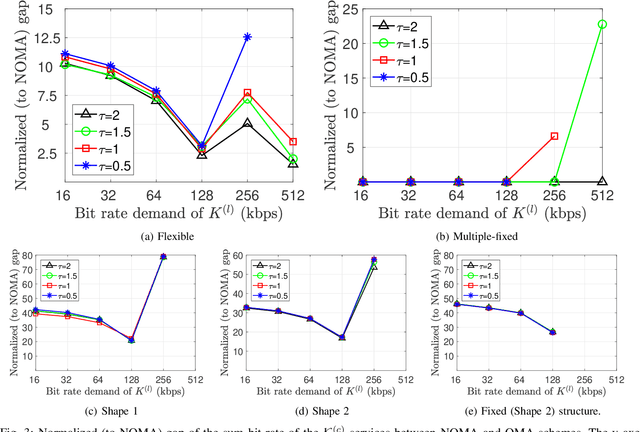
Abstract:Fifth generation (5G) new radio introduced flexible numerology to provide the necessary flexibility for accommodating heterogeneous services. However, optimizing the scheduling of heterogeneous services with differing delay and throughput requirements over 5G new radio is a challenging task. In this paper, we investigate near optimal, low complexity scheduling of radio resources for ultra-reliable low-latency communications (URLLC) when coexisting with enhanced mobile broadband (eMBB) services. We demonstrate that maximizing the sum throughput of eMBB services while servicing URLLC users, is, in the long-term, equivalent to minimizing the number of URLLC placements in the time-frequency grid; this result stems from reducing the number of infeasible placements for eMBB, to which we refer to as "conflicts". To meet this new objective, we propose and investigate new conflict-aware heuristics; a family of "greedy" and a lightweight heuristic inspired by bin packing optimization, all of near optimal performance. Moreover, having shed light on the impact of conflict in layer-2 scheduling, non-orthogonal multiple access (NOMA) emerges as a competitive approach for conflict resolution, in addition to the well established increased spectral efficiency with respect to OMA. The superior performance of NOMA, thanks to alleviating conflicts,is showcased by extensive numerical results.
Integrated Methodology to Cognitive Network Slice Management in Virtualized 5G Networks
May 11, 2020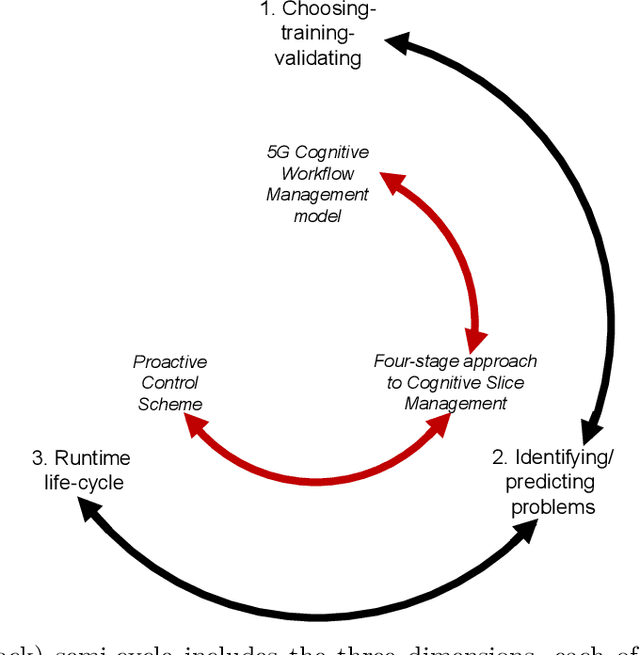
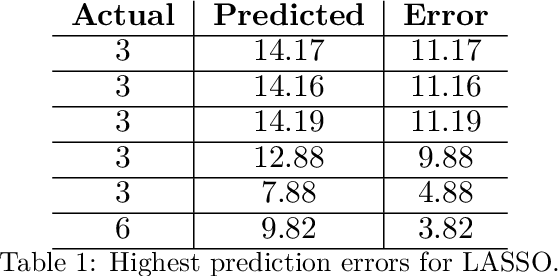
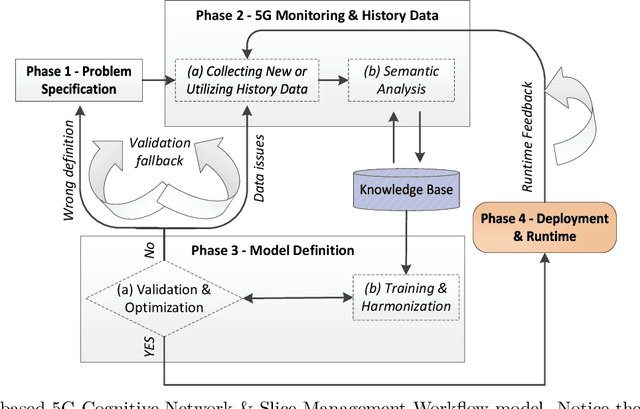
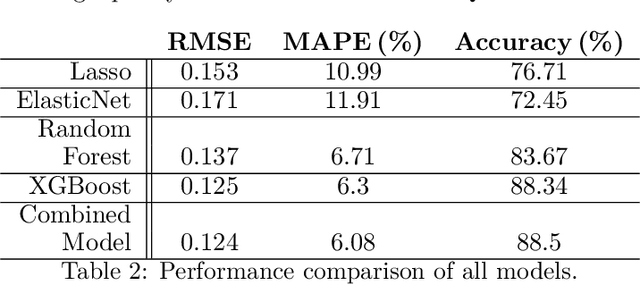
Abstract:Fifth Generation (5G) networks are envisioned to be fully autonomous in accordance to the ETSI-defined Zero touch network and Service Management (ZSM) concept. To this end, purpose-specific Machine Learning (ML) models can be used to manage and control physical as well as virtual network resources in a way that is fully compliant to slice Service Level Agreements (SLAs), while also boosting the revenue of the underlying physical network operator(s). This is because specially designed and trained ML models can be both proactive and very effective against slice management issues that can induce significant SLA penalties or runtime costs. However, reaching that point is very challenging. 5G networks will be highly dynamic and complex, offering a large scale of heterogeneous, sophisticated and resource-demanding 5G services as network slices. This raises a need for a well-defined, generic and step-wise roadmap to designing, building and deploying efficient ML models as collaborative components of what can be defined as Cognitive Network and Slice Management (CNSM) 5G systems. To address this need, we take a use case-driven approach to design and present a novel Integrated Methodology for CNSM in virtualized 5G networks based on a concrete eHealth use case, and elaborate on it to derive a generic approach for 5G slice management use cases. The three fundamental components that comprise our proposed methodology include (i) a 5G Cognitive Workflow model that conditions everything from the design up to the final deployment of ML models; (ii) a Four-stage approach to Cognitive Slice Management with an emphasis on anomaly detection; and (iii) a Proactive Control Scheme for the collaboration of different ML models targeting different slice life-cycle management problems.
 Add to Chrome
Add to Chrome Add to Firefox
Add to Firefox Add to Edge
Add to Edge